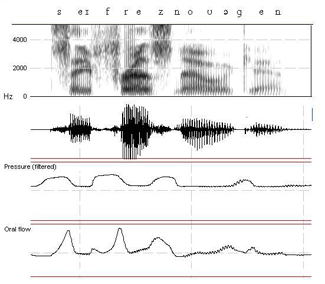Small phonetic differences

This volume focuses on the "phonetic interpretation" of segments, words and phrases. The term "phonetic interpretation" has traditionally assumed the conversion of abstract, discrete and invariant phonological representations (for example, sequences of segments) to continuous and varying speech signals (see Fig.1). A number of papers in the volume, however, force us to reassess the nature of phonological representations. The papers show that fine phonetic differences -which traditionally have played no role in phonological distinctions- are used by listeners to identify words, are used in dialects to indicate segmental contrasts, and are exploited by speakers to identify themselves with a particular social or regional group. Consequently, fine-grained phonetic detail must be part of the lexical representation and learnt by the speaker. Other papers in the volume provide evidence on the role of frequency of occurrence (token frequency) on the pronunciation of segments, and the role of frequency of the pattern in the lexicon (type frequency) on speech perception, and on well-formedness judgements.
These findings on the role of phonetic detail and frequency in speech processing and speech production cannot be accounted for by abstract phonological representations stripped of phonetic detail and suggest probabilistic models of representation of phonological categories such as those put forward by exemplar models or usage-base models (e.g., Johnson 1997, Bybee 2001, Pierrehumbert 2002). If this is so and phonetic variability itself is part of the make-up of the category, the focus of the book should not be on the phonetic interpretation of phonological representations, but rather on how speakers form phonological categories and how phonological categories structure phonetic variation.
In summary, this volume on "Phonetic Interpretation" raises the question of what it is that we are interpreting, furthers our understanding of the nature and the size of phonological representations, and presents experimental data on a variety of languages contextualized in the most current models of phonology and lexical access.
References
"Phonetic Interpretation. Papers in Laboratory Phonology VI". Ed. by John Local, Richard Ogden and Rosalind Temple. Cambridge: Cambridge University Press, 2003. Reviewed by Maria-Josep Solé, Universitat Autònoma de Barcelona. In Language, Volume 83.2 (2007), pp. 438-442

